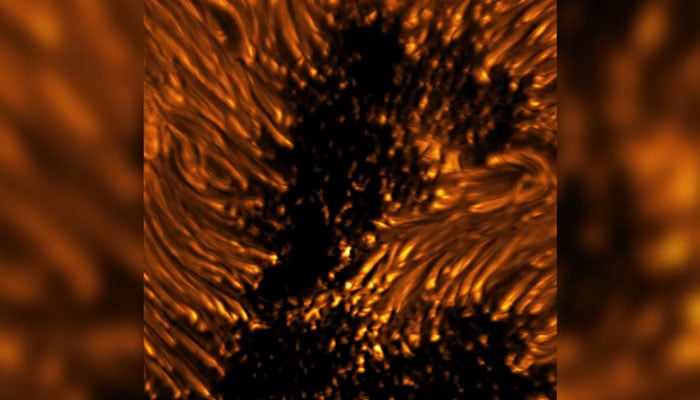New images from solar telescope showcase sun's surface in unprecedented detail

Newly released images of the sun's surface, obtained using the National Science Foundation's Daniel K. Inouye Solar Telescope, provide an unprecedented level of detail, showcasing sunspots and other features. Located on the island of Maui in Hawaii, this powerful 4-meter (13.1-foot) telescope has captured eight remarkable images that offer a unique perspective of the solar surface.
Despite the sun's increasing activity as it approaches the solar maximum in July 2025, which marks the peak of its 11-year cycle, the released photos focus on the quieter aspects of the sun's surface.

The images highlight the presence of cool, dark sunspots on the photosphere, the sun's surface region with a strong magnetic field. These sunspots can be as large as or even bigger than the Earth and are associated with solar flares and coronal mass ejections, which can affect satellite-based communications on Earth.
The contrasting sunspot regions captured in the images display bright hot plasma flowing upward, while darker and cooler plasma flows downward. In the chromosphere, the atmospheric layer above the surface, threadlike structures indicate the presence of magnetic fields.
The images also reveal fine, detailed structures within the dark sunspots, including glowing dots where the magnetic field is strongest. Surrounding the sunspot, there are penumbral filaments derived from the magnetic field that transport heat.

One of the images displays a sunspot in a decaying state, as it has lost most of its brighter surrounding region or penumbra. Scientists believe that the remaining fragments could represent the final stage of a sunspot's evolution before it vanishes.
The Inouye Solar Telescope has also captured "light bridges," which are bright solar features spanning the darkest region of a sunspot. These complex structures, with varying appearances, may indicate the imminent decay of a sunspot. Further observations will contribute to a better understanding of light bridge formation and its significance.
These images were obtained during the commissioning phase of the Inouye Solar Telescope, making them among the first observations using this ground-based solar telescope. The telescope is currently undergoing further enhancement to achieve its full operational capabilities.
Scientists have high hopes that the telescope's advanced capabilities will provide answers to crucial questions about the sun, such as the origins of solar storms and the complexities of its magnetic field. By enabling observations three times more detailed than other observatories, the Inouye Solar Telescope, in conjunction with space-based missions like Solar Orbiter and the Parker Solar Probe, aims to unravel long-standing mysteries surrounding our star while offering breathtaking views in a new light.
No comments:
Post a Comment